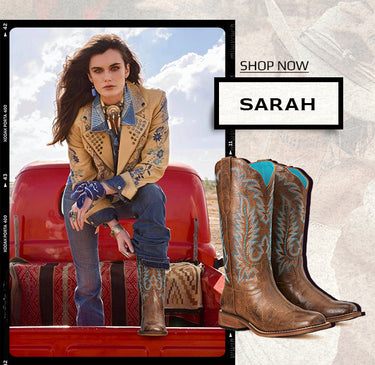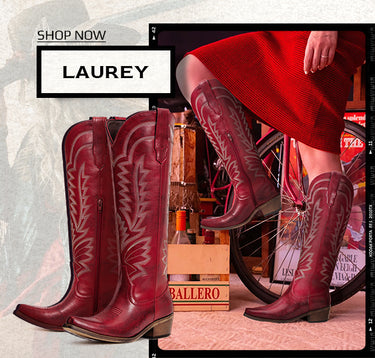The Anatomy of Cowboy Boots: A Detailed Breakdown
Cowboy boots are a distinctive type of footwear known for their unique construction and style. Each part of the boot plays a crucial role in its overall design, functionality, and durability. Let’s explore the various components that make up a cowboy boot and understand their significance.
- Shaft
The shaft is the tall part of the boot that extends from the ankle to just below the knee. It is one of the most distinctive features of cowboy boots and can vary in height.
Height: Typically, the shaft height ranges from 10 to 14 inches. Higher shafts provide more protection and support for the leg.
Design: Shafts can be plain or decorated with elaborate stitching, tooling, or inlays, often reflecting Western themes and motifs.
- Vamp
The vamp is the front part of the boot that covers the top of the foot.
Material: Usually made from durable leather, the vamp is subject to a lot of wear and tear, so it needs to be sturdy.
Design: The vamp can feature decorative stitching or overlays that enhance the boot’s aesthetic appeal.
- Toe Box
The toe box is the section at the front of the boot that houses the toes. It comes in various shapes, each providing a different look and feel.
Shapes:
Pointed Toe: Sharp and elongated, giving a sleek and formal appearance.
Round Toe: Rounded and softer, offering more room and comfort.
Square Toe: Broad and square, providing ample space for the toes.
- Heel
The heel of a cowboy boot is another distinctive feature, designed for both function and style.
Height: Heel heights typically range from 1 to 2 inches, though they can be higher for certain styles.
Types:
Riding Heel: Taller and angled, designed for riding and providing better grip in stirrups.
Walking Heel: Lower and more comfortable for everyday wear.
- Outsole
The outsole is the bottom part of the boot that makes contact with the ground.
Material: Usually made from leather or rubber. Leather outsoles offer a traditional look and feel, while rubber provides better traction and durability.
Construction: Attached to the boot using various methods such as stitching, gluing, or a combination of both.
- Insole
The insole is the interior bottom of the boot that the foot rests on.
Comfort: Often padded for comfort and can feature additional cushioning or arch support.
Material: Typically made from leather or synthetic materials to wick away moisture and provide comfort.
- Heel Counter
The heel counter is a stiff piece of material located at the back of the boot above the heel, providing structure and support to the heel area.
Function: Helps maintain the shape of the boot and offers additional support to the wearer’s heel.
- Pull Straps/Pull Tabs
Pull straps or tabs are located at the top of the shaft, making it easier to pull the boots on.
Design: Can be simple loops or decorative tabs, often featuring stitching or embossing for added detail.
- Lining
The lining is the material inside the boot that comes into contact with the wearer’s foot and leg.
Material: Typically made from leather or a soft fabric. Leather linings are more durable and comfortable, conforming to the wearer’s foot over time.
Function: Provides a smooth, comfortable surface and helps wick away moisture.
- Welt
The welt is a strip of leather or synthetic material that runs along the perimeter of the outsole, attaching it to the upper part of the boot.
Construction: Goodyear welt construction is a common method, known for its durability and the ability to be resoled, extending the life of the boot.
Conclusion
Understanding the anatomy of cowboy boots gives insight into their construction and the attention to detail that goes into making them. Each component plays a vital role in the boot’s functionality, comfort, and style. Whether you’re a cowboy boot enthusiast or a newcomer, appreciating the craftsmanship behind these iconic boots can enhance your appreciation for this timeless footwear.















